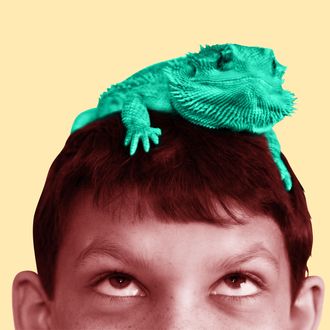
Dogs are man’s best friend. Cats are the internet’s best friend. But rats? Snakes? Ants? True, some people keep these as pets, but just as many others would be more likely to call those animals pests. In a recent interview with the Washington Post, an animal behaviorist argues that our love for certain animals and distaste for others is a bit more nuanced than we might think.
Hal Herzog — who writes the Animals and Us blog for Psychology Today and who wrote the book Some We Love, Some We Hate, Some We Eat: Why It’s So Hard to Think Straight About Animals – is an anthrozoologist by day, studying why humans and animals bond (or don’t). What he’s found out over the years is that much of what we see as lovable and adorable in certain animals and irksome and gross in others is dictated by a complex algorithm of emotion and culture.
“I used to think pet-keeping was a fundamental attribute of human nature — it evoked our parental instincts,” he told the Washington Post this week. “The thing is I no longer believe that. I think that culture trumps biology, because there are cultures that don’t even have a word for pet.”
Indeed, the line between pet and pest can be a surprisingly blurry one, particularly as you travel around the globe. Consider dogs. Americans might stop and pet a fluffy pup on a corner, but in many Asian and Middle Eastern countries, dogs are perceived much as we see rats here; in other cultures, dog meat is prized as a delicacy. Cats, too, elicit mixed perceptions around the world: good-luck charms in some cultures, pests in others, positively demonic in still others. But Americans probably will never view either cats or dogs as pests or dinner; it’s too ingrained in our culture to see them otherwise.
“You could almost say that people imprint on the animals they grew up with,” James Serpell, director of the Center for the Interaction of Animals and Society at the University of Pennsylvania School of Veterinary Medicine, told the Post. “If you grew up with dogs, you tend to be a lifelong dog person. You may even have a preference for particular breeds of dogs.”
In other words, cats and dogs might conjure the divisive feelings they do simply because of our childhood experiences with them. And pop culture has a huge role to play in developing our notion of how we view our animals. When it comes to dogs, Lassie is the loyal friend, Lady and the Tramp are romantic and lovable, the 101 dalmatians are, well, a lot. But think of how snakes have been portrayed: the slimy Kaa in The Jungle Book, Jafar’s alter ego as a snake in Aladdin. Dogs are good, snakes are bad — at least that’s what we’ve been told by our childhood cartoons.
Put another way, there’s reason to believe we have the capability to love any animal, given the right nurturing environment. Whether or not they love us back is another matter.




